Liquid Chalk for Stronger Grip
Weight lifters, rock climbers and athletes love and recommend our liquid grip and chalk products for one simple reason: they feel safe and productive while using them. We always strive for customer satisfaction and we will continue to research, develop and produce top quality liquid grip.
Wednesday, 24 April 2019
Mezzalama 2019 ski mountaineering marathon postponed to Sunday 28 April
Tuesday, 23 April 2019
Zion Canyon new rock climb by Jeremy Collins and Jarod Sickler
Hansjörg Auer, David Lama, Jess Roskelley: the families bid farewell
Monday, 22 April 2019
Fighting Fit: The Health Conditions That Could Thwart Your Progress
The Rx Review: Reporting on Fitness and CrossFit News, Contributor
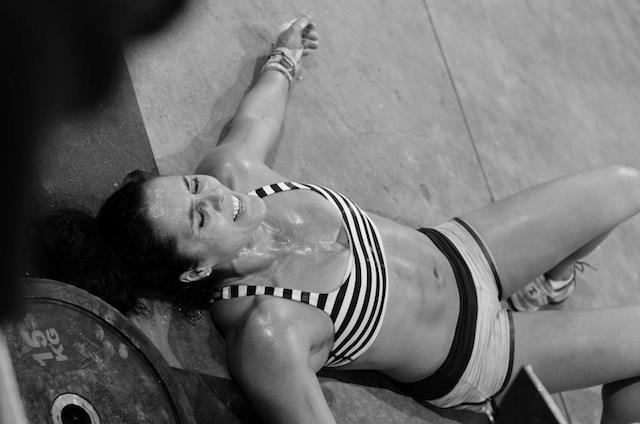
With physical inactivity classified as a global public health problem by the World Health Organization, much health advice is geared towards encouraging people to increase their activity levels and engage in more physical exercise. Of course, there is more to staying healthy than exercise, and balance is the key to ensuring a healthy and happy life.
Indeed, those who enjoy high levels of activity and work hard towards their fitness goals may be more at risk of some health complaints than those who exercise less frequently. If you’re an avid trainer, whatever sport you enjoy, it’s worth being aware of some of the health issues that may arise along the way.
Sports Injuries
Perhaps the most obvious risk for athletes is a sports injury. Whatever exercise you’re doing, it’s crucial to pay attention to your warm-up and cool-down routines to reduce the risk. If you are doing any weightlifting or gymnastic training, it is important to focus on good form and proper technique. But even with this in mind, it’s possible to incur injury. Contact sports carry the risk of collision, which can result in injuries to any body part, including the head. Muscle, ligament and bone injuries (most commonly, stress fractures) can also occur in solitary sports like running, swimming or CrossFit. So it’s important for athletes to pay attention to their bodies’ signs that it may be time for rest.
Fungal Infections
A commonly overlooked health complaint seen in those who work hard on their fitness is the fungal infection. Fungal infections can range from athletes foot (characterized by an itchy rash, commonly seen between the toes) and fungal nail infections, which are easily spread in locker rooms and showers, to ringworm (manifested as a circular rash on the skin). These conditions thrive in warm, moist environments, which is why they’re so commonly seen amongst athletes.
Research into bacteria by leading companies like Bio-Technical Resources may lead to an increase in bacterial cures for fungal infections, but to prevent the problem from arising, athletes are encouraged to keep their skin clean and dry, and wash and air sports kits – including footwear – frequently.
Respiratory Conditions
While regular exercise can promote good respiratory health, respiratory problems are common in top-level athletes. Particularly among endurance athletes, due to frequent and prolonged periods of high ventilation. Strenuous exercise can sometimes result in exercise-induced bronchoconstriction (more commonly known as exercise-induced asthma) in which the airways are narrowed. This is more likely amongst asthma sufferers. But it can occur during activity for any athlete. Those who are prone to it are advised to cover their noses and mouths when exercising during cold weather, and pay attention to their respiratory status during exercise.
Overtraining Syndrome
Overtraining is a common mistake made by those dedicated to maintaining high levels of fitness and a good physique. It’s important to make rest and recovery days an integral part of your training schedule in order to avoid the symptoms of overtraining, which include reduced sleep quality, mood disturbances, muscle soreness and an elevated resting heart rate. Ultimately, overtraining can lead to poor performance, and can impact on the end goal, so if you’re dedicated to your fitness, adequate rest is essential.
Regular exercise is a crucial component of a healthy lifestyle. But for those who train regularly and are dedicated to their fitness, it’s important to be aware of conditions that may arise as a result. Being aware of the ailments that can occur allows you to prepare properly and recognize symptoms should they arise. Ultimately allowing you to perform at the optimum level for as long as possible.
Fighting Fit: The Health Conditions That Could Thwart Your Progress
Review: The Marc Pro Plus
The Rx Review: Reporting on Fitness and CrossFit News, John Michael Bric
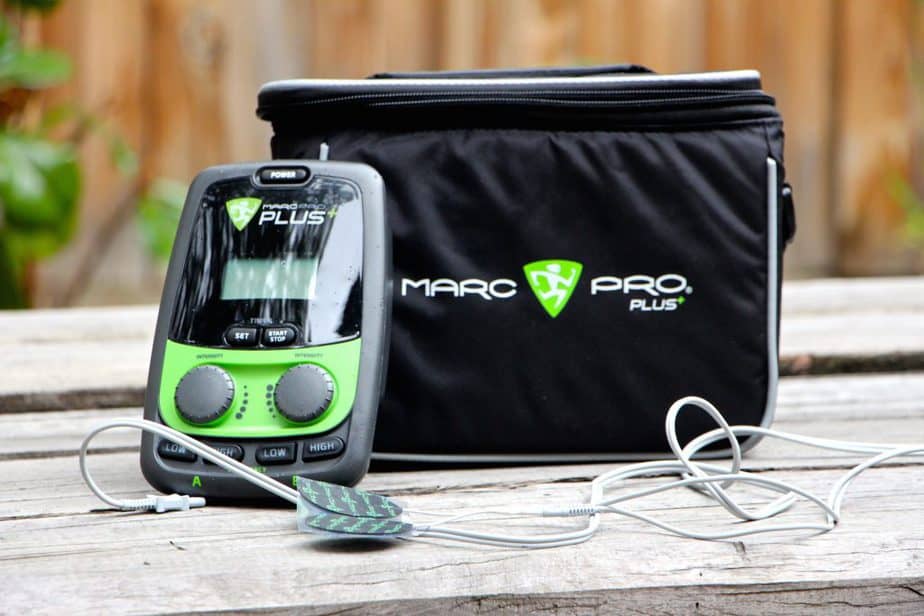
This week, we take a moment to review the latest muscle stimulation device from Marc Pro: The Marc Pro Plus!
Item: Marc Pro Plus
Price: $1399 USD
Manufacturer: Marc Pro, Huntington, CA, USA
Website: www.MarcPro.com
It’s been a few years since The Rx Review published its review on the original Marc Pro. At the time, it was pretty much the first of its kind to target the CrossFit Functional fitness market.
Since then we have seen several new muscle stimulation devices hit the shelves, including the Compex unit. During that time Marc Pro has also released a new and improved device: The Marc Pro Plus!
We got our hands on the unit earlier this year. Since then we have put it to the test to see how it compares to the original Marc Pro, and other muscle stimulation devices on the market today.
Overview
For those who don’t know, the Marc Pro is a unique Electrical Muscle Stimulation (EMS) that utilizes electricity to speed the recovery process after physical activity. Just like the original unit, the Marc Pro Plus delivers electrical stimulation, or electrical pulses (the intensity of which is controlled by the user), via replaceable electrode pads that connect to two channels on the device.
These pads should be placed on targeted muscles before switching the device ‘on’. Once the Marc Pro Plus is activated, the user is able to create non-fatiguing, muscle contractions and pluses on that specific area of the body.the aim of this is to improve the transport of nourishment and waste, speed recovery, and get you back to 100% as fast as possible.
The people behind the Marc Pro Plus have also gone through extensive testing to ensure the device works effectively. The original unit itself was developed on the back of 30 years of medical device experience and research. As well as feedback from athletes and trainers.
As mentioned earlier, there are several other muscle stimulation devices on the market at the moment including the TENS unit and the Compex Muscle Stimulator. The Marc Pro Plus, however, differs slightly from these. It also differs from the devices seen on late night TV claiming to give you ripped abs. The Marc Pro Plus is essentially a recovery tool that also offers pain relief, in the hope of getting you back to a high level of athletic performance, faster.
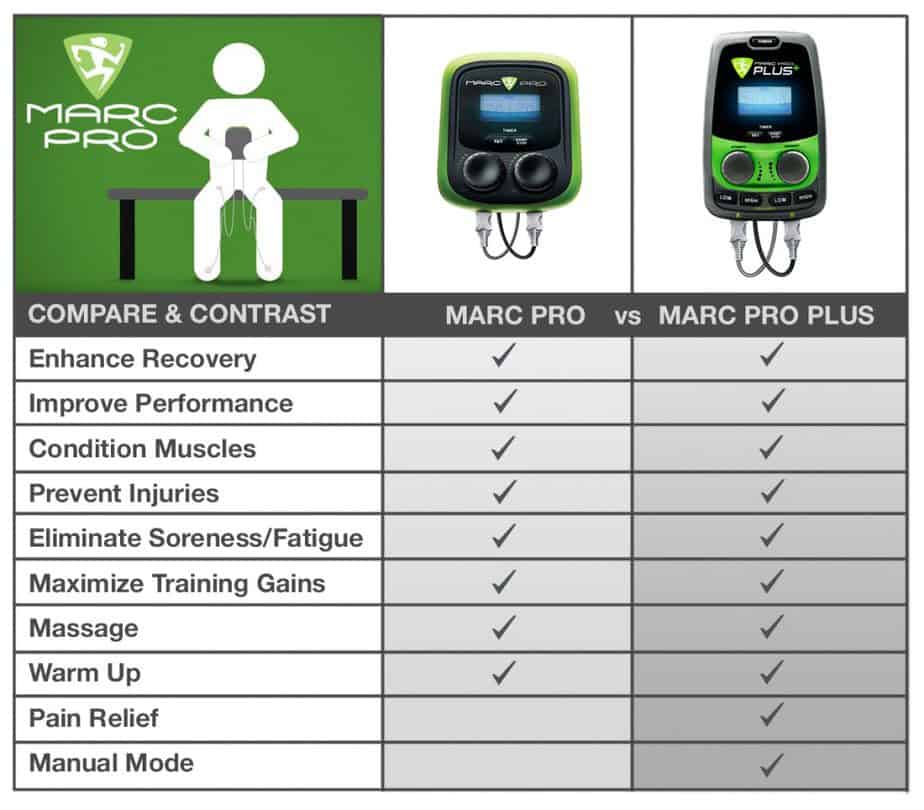
Differences to Marc Pro
The Marc Pro Plus really only has one difference to the Marc Pro. That is the option of using ‘high frequency’. The high frequency option is designed to shut down more stubborn pain in areas in the body.
The low frequency functionality is exactly the same on the Marc Pro and the Marc Pro Plus. The Plus uses the same waveform, voltage levels, and the long pulse duration.
The Marc Pro Plus is also slightly bigger than the original version.
In the Box
The Marc Pro Plus comes with the following:
- A soft, padded carrying case
- Two lead wires
- Wall charger
- User’s manual (with detailed electrode placement instructions)
- Six packs of reusable electrode pads with four pads in each pack
- Aloe Moisturising Gel
Testing
I used the Marc Pro Plus every day (morning and night) during my normal training regime. In the morning, or before training, I would work on preparing my muscles using low frequency. After training and at night, I would use high frequency on any areas that were causing pain, and low frequency on the muscle groups I used the most during the day’s training.
Finding time to use the Marc Pro Plus wasn’t too hard. I would often just use the device while working behind a computer (avoiding arms so I could still type). And in the evening I would use it while watching TV, or just relaxing on the couch.
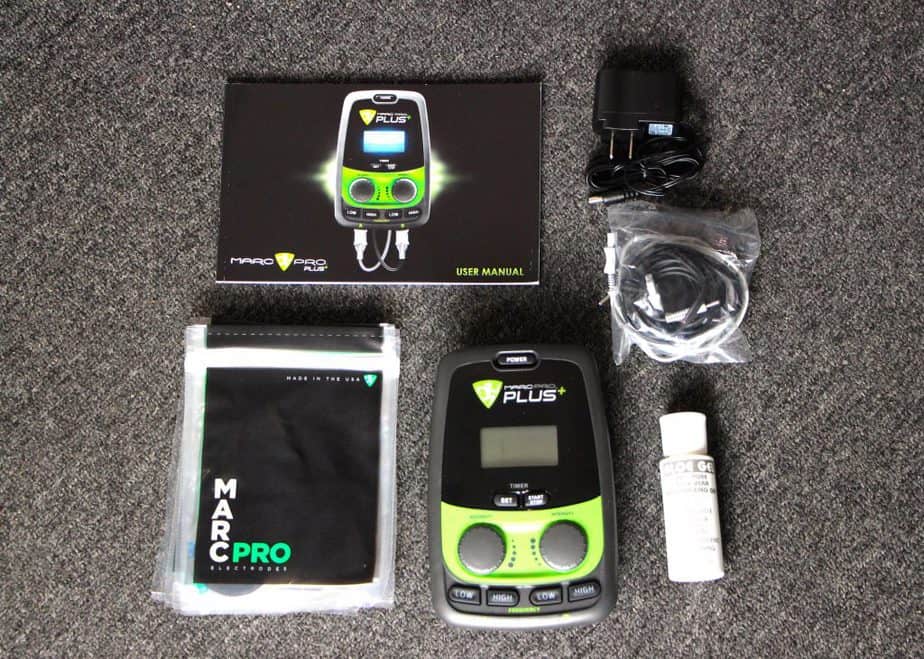
The Good
It Works: Just like the Marc Pro, the Marc Pro Plus really is an effective recovery tool. Personally, I found my muscles felt relatively ‘fresher’ before each workout. My legs also feel ‘lighter’ after several days using the device. In addition, I didn’t really notice any kind of Delayed Onset Muscle Soreness (DOMS) while using the Marc Pro Plus. A couple of times I woke up sore after a tough workout, but after a long session with the Marc Pro Plus my muscle soreness never really got worse.
The people at Marc Pro say the longer, the better, with the device. And that the higher the intensity, the better the results will be. There were times where I watched an entire movie with the device running, and I certainly had no side effects. So don’t worry about ‘over-using’ the Marc Pro Plus.
High Frequency Setting: As mentioned earlier, the high frequency setting is the only major difference the Plus has over the standard Marc Pro. The high frequency setting (60Hz) is substantially stronger then the low frequency setting (2Hz) and is used to provide very significant and lasting pain relief. The high setting is designed to offer temporary pain relief in sore areas, and offer an alternative to prescription drugs, or other forms of massage therapy. Whole it may make you feel substantially better, it doesn’t have the rehabilitative benefit of the low frequency setting.
Personally, I found the high frequency setting fantastic. I have had lower back issues for many years, and I found that long sessions using the high setting certainly helped me sleep better at night. By no means did it cure my back or eliminate the pain all together, but it certainly helped me get a better sleep and not worry about my back as much as I had in the past.
No Muscle Fatigue: Some other muscle stimulation devices like the Compex and TENS Unit can often fatigue muscles (depending what setting you use). But Marc Pro ensures us that there is no muscle fatigue while using the device. They say that they employ a proprietary dynamic decaying waveform that contracts muscles and then slowly releases them over a period of time. This allows muscle fibers to properly relax, and fluids to move in and out of the area without causing fatigue to the muscle.
While rival brands like the TENS Unit are effective at re-educating muscles, sometimes they can be slightly painful, uncomfortable and fatiguing.
Easy to Use: The Marc Pro Plus is very simple and easy to use. There are two channels, each channel has the option of “high” or “low” frequencies. And each has their own intensity levels that you can easily adjust. Unlike the Compex, which has so many menu options and session settings (which can be super confusing), the Marc Pro Plus literally has only a few options to use. The few options available are also proven to be effective, so there is no need to add extra settings just for the sake of it. I also had people ask to use my unit, and it was very easy to show them how.
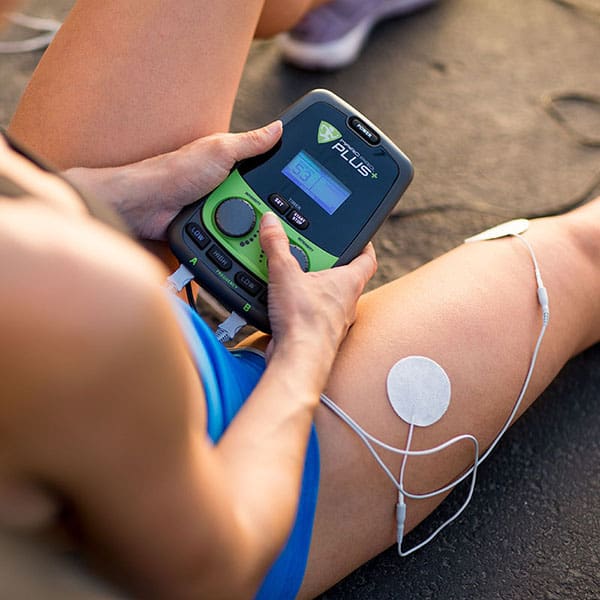
The Bad
Price: The major downside to the Marc Pro Plus is the price tag. At the time of writing the device was selling for around $1399 USD. That’s more than twice as expensive as the original Marc Pro which sells for $699 USD. That makes it a lot more expensive that the TENS Unit and more expensive than some of the Compex devices on the market (there are a few compex versions more expensive).
Replacement Parts: The Marc Pro Plus comes with several packs of four adhesive-backed, reusable electrode pads. These are expected to last around 20-25 uses, and the adhesive on the pads can often lose their stickiness earlier. A replacement set (four pads) sells for around $9.99 USD online. If you use the Marc Pro Plus every day, then you could be looking at paying over $100 a year on pads alone. In addition, I have heard some users mention their cords had frayed after several months of using them. This never happened to me, but it’s another ongoing expense you’ll have to pay for if it does occur.
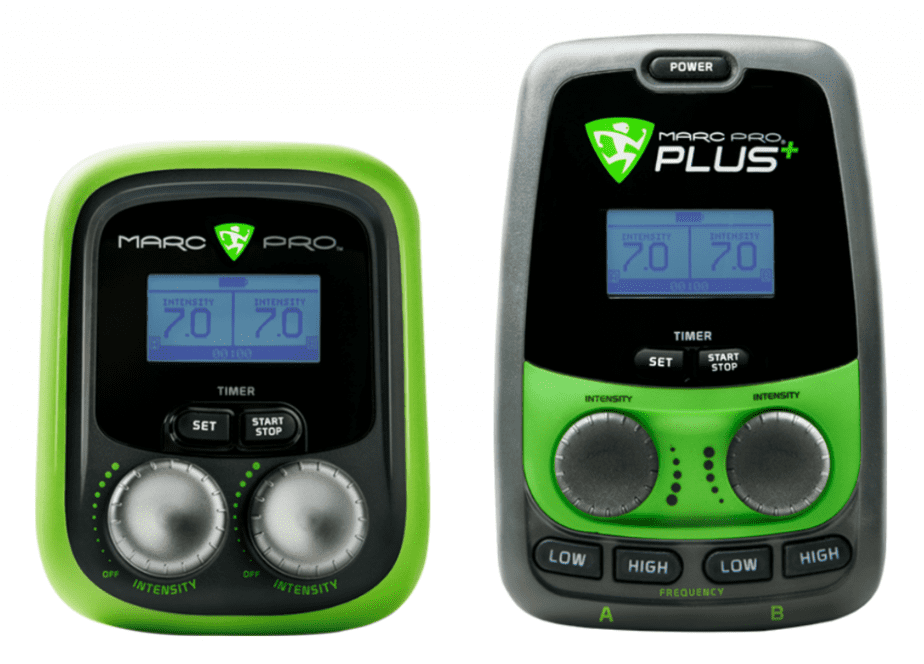
Conclusion
It’s always a big investment when buying anything over $1,000. So it’s important you weight up the pros and cons before buying something like the Marc Pro Plus.
Overall, I think the device is fantastic, and a great tool to speed up my recovery and help control body pain. Compared to other muscle stimulation devices on the market (TENS Unit and Compex) I find it to be just as effective, if not better. It is easy to use, has decent battery life, and is portable and easy to carry around.
The decisive factor in buying the Marc Pro Plus is going to be money. There is no denying how great the device is and what it offers, but is it worth the price tag? If you are a professional athlete, looking for that extra edge over competitors, then I think it is certainly a worthwhile purchase. The benefits you will experience from the Marc Pro Plus will definitely be worth the money.
On the flipside, if you are a ‘weekend warrior’ who doesn’t compete, then it really comes down to how much money you’re willing to part ways with.
Five Ways You Endanger Your Health Every Day
The Rx Review: Reporting on Fitness and CrossFit News, Contributor

We all take steps each and every day to make ourselves the healthiest we can be. Whether that be hitting the CrossFit gym, eating less red meat, going to bed a little earlier, or scheduling regular checkups with our doctors.
However, at the same time, there are also ways we endanger our health every day, whether we know it or not.
Knowing is half the battle. Once we know ways we put our health in danger, we can take the steps to lessen the chances of getting injured or sick.
Here are five surprising ways you endanger your health every day.
Getting Behind the Wheel of a Car
Without a doubt, one of the most dangerous things many of us do every day is get into a moving vehicle. For most of us, that means getting behind the wheel of a car.
Drunk driving is especially dangerous. Not only can you be taken to jail with high blood alcohol content, even just having one drink can impair you on the road. It’s really better not to drink and drive at all if you want to maintain your health and safety.
But it’s not just drunk driving that’s dangerous. Distracted driving can be just as dangerous, if not more dangerous, than driving under the influence. Even if you aren’t drunk or distracted, you’re still at the mercy of other drivers who may not be taking their job behind the wheel seriously.
That doesn’t mean you shouldn’t ever get into a moving vehicle ever again! But it does mean you should be mindful every second you’re on the road.
Spend All Day Sitting at Your Desk
It seems the jobs of the future all involve a desk and a computer. Many of these jobs are high paying, which is good. Unfortunately, they also include long hours sitting in a chair.
Although sitting can be comfortable, that doesn’t mean it’s good for your health. Many studies, and authors like Dr. Kelly Starrett, argue that excessive sitting is actually very bad for your health.
Sitting comes with a whole host of problems. It can increase your chances of getting heart disease, not to mention back pain. The bad news is, regularly hitting the gym won’t fix it!
Instead, spend time standing for at least a portion of the day. You’ll burn more calories and safeguard your health.
Touch Your Face
How many times a day do you think you touch your face? Most people don’t think they touch their face very much, but the truth is, most of us touch our faces dozens of times each day.
Whether you’re scratching your eye or biting your nails, the trouble with touching your face is that you’re transferring germs from your hands, which touch things like sweaty barbells and dirty keyboards, to your face, increasing your chances of getting sick.
Try to avoid touching your face whenever possible. Wash your hands frequently so that when you do touch your face, you aren’t transferring a bunch of germs straight into your body.
Drink Diet Soda
Think you’re making a good choice for your health by switching to diet soda? Think again! It turns out, it can be just as bad for your health as other sugary drinks.
A few surprising facts about diet soda include:
- Middle aged adults who consume diet soda every day are more likely to develop dementia
- People who drink diet soda every day have smaller brain volumes than those who don’t
- Artificial sweeteners can increase your chances of getting headaches
- You’re more likely to experience breakouts when you drink diet soda
That only scratches the surface. Do your health a favor and give up the sugary drinks for good.
Take a Shower
Most people take daily showers because they think it’s good for their health and hygiene. It turns out, excessive showering can be harmful.
Most of us don’t need to bathe every day. It strips your body of its protective layer, which leaves you more susceptible to illness. Studies have shown that even antibacterial soap only moves bacteria around—it doesn’t actually get rid of it. Not to mention, bathing all the time can make your skin dry.
Instead, take a shower only when you get dirty, or once every couple of days, whichever comes first.
Every little thing you do for your health helps! Hopefully, this list uncovered a few things you’ve been doing to endanger your health every day, as well as steps you can take to make sure they no longer put you at risk.
Five Ways You Endanger Your Health Every Day